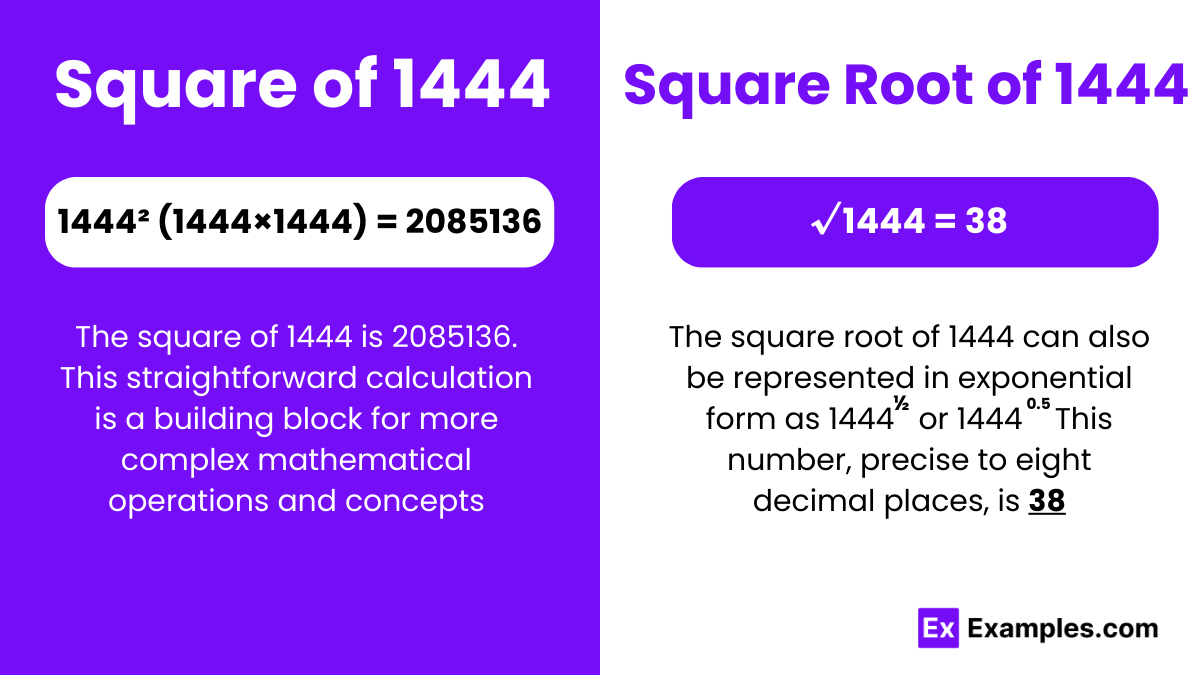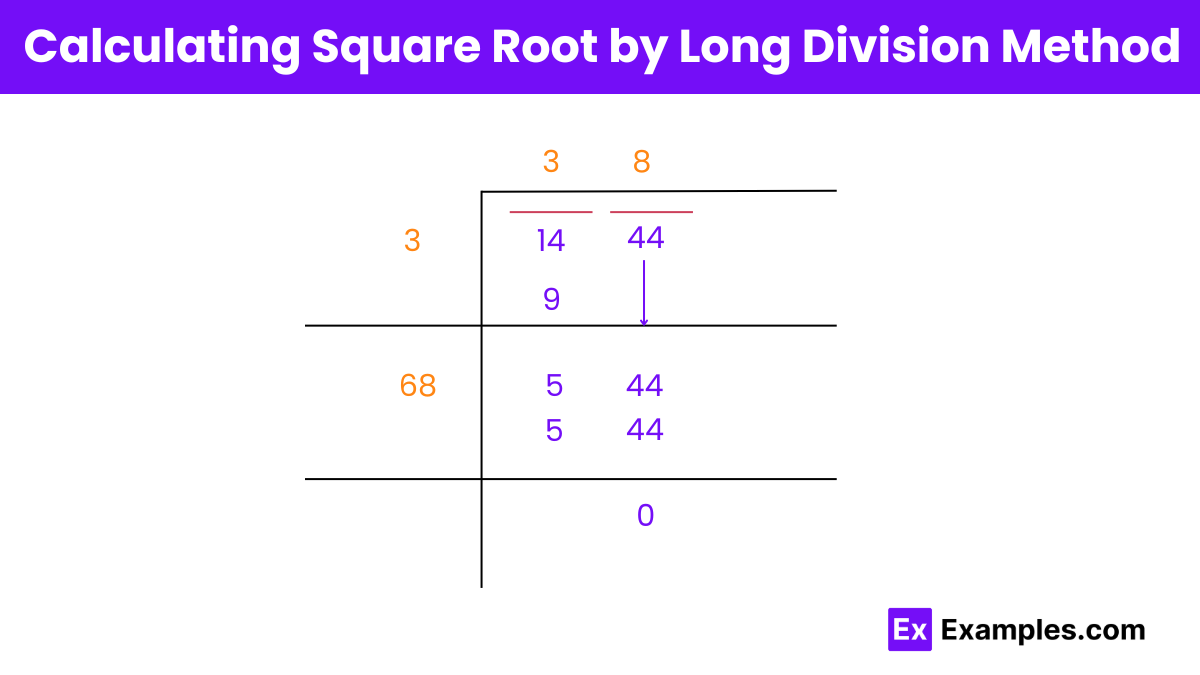What is the square of 1444?
2086276
2087364
2085646
2085636


In mathematics, particularly in algebra, the concepts of square and square roots are fundamental. Squaring a number, like 1444, means multiplying it by itself, yielding a result such as 2,085,136. This operation is crucial in exploring properties of both rational numbers (which can be expressed as a fraction of two integers) and Irrational Numbers (which cannot be neatly expressed as a fraction). Understanding these concepts helps deepen knowledge of mathematical relationships and patterns.
This calculation is what is referred to as “squaring” the number 1444, and the result, 2,085,136, is the “square” of 1444. This process is used in various mathematical applications to represent area or to perform computations in algebra and geometry.
The square root of a number is a value that, when multiplied by itself, gives the original number. In this case, the number is 1444.
Finding the square root of 1444 involves determining what number, when multiplied by itself, equals 1444. Mathematically, this is represented as:
1444 = 38
This means that 38 multiplied by 38 equals 1444:
38×38 = 1444
The square root operation is widely used in mathematics, particularly in algebra and geometry, to solve various equations and problems involving areas and lengths.
Exponential Form: 1444^½ or 1444^0.5
Radical Form: √1444
The square root of 1444 is rational. A number is considered rational if it can be expressed as the fraction of two integers (where the denominator is not zero). In this case, the square root of 1444 is 38, which can be expressed as a fraction 38/1. Since 38 is an integer, its square root is a rational number.
Finding the square root of 1444 can be approached using several methods, each with its own application and level of precision. Here are some common methods:
Prime Factorization:
Break down 1444 into its prime factors. Since 1444 = 2 × 2 × 19 × 19, its square root is the product of each factor taken once, i.e., √1444 = 2×19 =3 8.
Long Division Method:
This is a manual method that involves a step-by-step division-like process to find the square root. It’s particularly useful for larger numbers or when the prime factors aren’t easily apparent.
Using a Calculator:
The most straightforward method is to use a calculator, either a physical one or a software-based one like those on computers and smartphones.
Newton’s Method (Newton-Raphson):
This is a numerical technique for finding approximate solutions to numerically solving equations like 𝑥²−1444 = 0. It involves iterative guessing and refining the guess based on the derivative of the function.
Babylonian Method (Guess and Check):
This ancient method, also known as the “Heron’s method”, involves making an initial guess at the square root and then improving the guess and Repeat until the value stabilizes.

Pairing the Number:
Finding the First Digit of the Root:
Form the Next Dividend:
Updating the Divisor:
Perform the Division:
Conclusion:
This calculation shows that 1444 is the result of squaring 38, thereby confirming it as a perfect square. This concept is used in various mathematical contexts, particularly in algebra and geometry, where recognizing perfect squares can help simplify computations and solve equations more effectively. Additionally, perfect squares play a role in number theory and are essential for understanding the properties of integers and their relationships.
Understanding squares and square roots is crucial in mathematics for solving equations, understanding geometric concepts like area and volume, and analyzing patterns and relationships in numbers.
The Babylonian method, also known as the method of guess and check, is an ancient technique for finding square roots. It involves making an initial guess at the square root, then refining that guess by averaging the guess and the result of dividing the original number by the guess. For 1444, you would start with an initial guess (such as 37 or 39), compute 1444 divided by the guess, and average this quotient with the guess to get a new guess. Repeat until the guesses converge to 38.
Text prompt
Add Tone
10 Examples of Public speaking
20 Examples of Gas lighting
What is the square of 1444?
2086276
2087364
2085646
2085636
Which of the following is closest to the square root of 1444?
37
38
39
40
If x² = 1444, what is the value of x?
36
37
38
39
What is the exact square root of 1444?
36
37
38
39
Simplify √1444 to its integer form.
36
37
38
39
What is (√1444)²?
1442
1443
1444
1445
Determine the result of squaring the square root of 1444.
1442
1443
1444
1445
What is the fourth power of the square root of 1444?
1444
1444²
1444³
1444⁴
Find the value of √(1444 ÷ 4).
18
19
20
21
Which number squared equals 1444?
37
38
39
40
Before you leave, take our quick quiz to enhance your learning!

